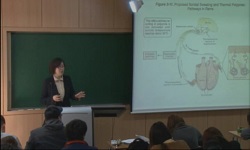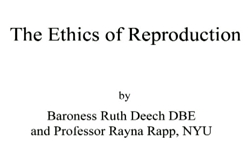This article is a socio-cultural research on the personal trainer culture in Korean society by employing an original synthesis of the work of Elias and Bourdieu. The purpose of this research is to provide a multidimensional and in-depth analysis of pe...
http://chineseinput.net/에서 pinyin(병음)방식으로 중국어를 변환할 수 있습니다.
변환된 중국어를 복사하여 사용하시면 됩니다.
- 中文 을 입력하시려면 zhongwen을 입력하시고 space를누르시면됩니다.
- 北京 을 입력하시려면 beijing을 입력하시고 space를 누르시면 됩니다.

퍼스널 트레이너에 대한 탐색적 고찰: 강남과 강북 트레이너 간 몸의 기득권자-아웃사이더 권력관계를 중심으로 = An Exploratory Study on Personal Trainer: Focusing on Established and Outsider Power Relations of the Body among Trainers of Gangnam and Gangbuk
한글로보기부가정보
다국어 초록 (Multilingual Abstract)
This article is a socio-cultural research on the personal trainer culture in Korean society by employing an original synthesis of the work of Elias and Bourdieu. The purpose of this research is to provide a multidimensional and in-depth analysis of personal trainers, by researching the relationship between trainer groups with differing economic and cultural capital (e.g. Gangnam and Gangbuk, private and public center). Through interviews and participant observation, the established and outsider relations of personal trainers in both Gangnam and Gangbuk are examined (Gangnam 13: Gangbuk 10). The established and outsider relations of the body among trainers are distinguished by their symbolic spaces(Gangnam and Gangbuk), sites(private and public), civilizing process of the bodies, and forms of capital (especially, 'Hakbeol' capital). Established trainers stigmatize outsider trainers by using the means of dissemination via blame gossips: ‘they do not even know what PT is’, ‘the nogari trainers are killing time with unnecessary words’, and ‘they are playboys.’ Gangnam trainers have both visible and invisible cohesions in connecting with the Gangnam collective identity. A group image of Gangnam trainers represents the best image of all trainers, while the image of outsider group consists of the worst characteristics of the worst members. Gangbuk trainers have low cohesion, so they cannot resist these negative stigmatizations – thus, they internalize them. The reason for this phenomenon of self-segregation is that reproduction of these social differences is entirely determined by each group’s level of cohesion. Their extant social differences make Gangnam’s cohesion stronger and Gangbuk’s cohesion weaker. A trainer’s cultural capital and habitus can have influence on club members who learned from other established trainers and the outsiders. Therefore, the hierarchies of fitness consumer (club, member, trainer) reproduce socially and culturally through these processes.
국문 초록 (Abstract)
본 연구의 목적은 Elias와 Bourdieu의 이론들을 바탕으로 경제자본과 문화자본이 달리 나타나는 서울 강남과 강북의 피트니스 장에서 트레이너들 간 권력 관계를 살펴보는 것이다. 인터뷰와 참...
본 연구의 목적은 Elias와 Bourdieu의 이론들을 바탕으로 경제자본과 문화자본이 달리 나타나는 서울 강남과 강북의 피트니스 장에서 트레이너들 간 권력 관계를 살펴보는 것이다. 인터뷰와 참여관찰 방법을 통해 강남과 강북 트레이너들 간 기득권자-아웃사이더(Established-Outsider, E-O) 권력 관계를 강남과 강북이라는 상징 적 공간, 클럽 아비투스(프라이빗과 퍼블릭 센터), 몸의 문명화 과정, 그리고 자본의 형태(특히 학벌자본) 측면에 서 살펴보고자 하였다(강남 13명: 강북 10명). 연구결과, 기득권자 위치에 있는 트레이너들은 아웃사이더 트레 이너들에 대해 ‘그들은 PT가 무엇인지 모른다’, ‘불필요한 말만하고 시간만 때운다’, ‘그들은 바람둥이다' 라는 가십을 통해 낙인을 찍고 있었다. 강남 트레이너들은 강남이라는 집단 정체성과 연결되는 보이는/보이지 않는 사회적 유대감(social cohesion)을 가지고 있었다. 이러한 과정을 통해 강남 트레이너들은 모든 트레이너의 최 고의 이미지를 대표하며, 강북 트레이너들은 가장 나쁜 특성을 구성하는 아웃사이더 집단의 이미지를 가진 것처 럼 인식되어졌다. 강북 트레이너들 간 사회적 유대감은 약하기 때문에, 이들은 이러한 부정적 낙인에 저항할 수 없었으며 오히려 이러한 이미지를 내면화하고 있었다. 결국, 기득권자-아웃사이더(E-O) 권력 관계 및 사회적 차이의 재생산은 각 그룹의 사회적 유대감 수준에 의해 전반적으로 결정되고 있음을 확인할 수 있었다. 즉, 현 존하는 사회적 차이들은 강남의 유대감을 더욱 강하게 하고 강북의 유대감을 더욱 약하게 하고 있었다. 더 나아 가 트레이너의 문화자본과 아비투스는 클럽 회원들에게 영향을 미칠 수 있다는 점에서 피트니스 소비자(클럽, 회원, 트레이너)의 위계는 이러한 과정을 거쳐 사회적·문화적으로 재생산된다는 점에서 주목할 필요가 있을 것 이다.
참고문헌 (Reference)
1 김수현, "휘트니스 센터 퍼스널 트레이너의 커뮤니케이션 만족이 직무만족, 조직몰입에 미치는 영향" 한국코칭능력개발원 13 (13): 45-55, 2011
2 김미영, "호텔과 ‘강남의 탄생’" 서울학연구소 (62) : 1-26, 2016
3 임호인, "헬스클럽 트레이너에 대한 고객의 기대도가 재구매 의도에 미치는 영향" 한국체육과학회 17 (17): 443-453, 2008
4 심상신, "헬스클럽 이용자의 몰입경험이 스포츠 재미 요인에 미치는 영향" 7 (7): 13-27, 2006
5 정성관, "헬스클럽 서울만도 350개"
6 김동규, "한국직업사전" 고용노동부; 한국고용정보원 2012
7 이혁기, "학업과 운동을 병행하는 운동부 문화와 사회적 함의" 한국스포츠사회학회 23 (23): 85-105, 2010
8 김성연, "퍼스널 트레이너의 서비스 품질과 스포츠 센터에 대한 고객 충성도 분석" 한국엔터테인먼트산업학회 8 (8): 131-141, 2014
9 구본수, "퍼스널 트레이너의 생애사 연구를 통한 직업사회화 과정의 이해" 한국코칭능력개발원 12 (12): 3-16, 2010
10 문화체육관광부, "체육백서" 문화체육관광부 2009
1 김수현, "휘트니스 센터 퍼스널 트레이너의 커뮤니케이션 만족이 직무만족, 조직몰입에 미치는 영향" 한국코칭능력개발원 13 (13): 45-55, 2011
2 김미영, "호텔과 ‘강남의 탄생’" 서울학연구소 (62) : 1-26, 2016
3 임호인, "헬스클럽 트레이너에 대한 고객의 기대도가 재구매 의도에 미치는 영향" 한국체육과학회 17 (17): 443-453, 2008
4 심상신, "헬스클럽 이용자의 몰입경험이 스포츠 재미 요인에 미치는 영향" 7 (7): 13-27, 2006
5 정성관, "헬스클럽 서울만도 350개"
6 김동규, "한국직업사전" 고용노동부; 한국고용정보원 2012
7 이혁기, "학업과 운동을 병행하는 운동부 문화와 사회적 함의" 한국스포츠사회학회 23 (23): 85-105, 2010
8 김성연, "퍼스널 트레이너의 서비스 품질과 스포츠 센터에 대한 고객 충성도 분석" 한국엔터테인먼트산업학회 8 (8): 131-141, 2014
9 구본수, "퍼스널 트레이너의 생애사 연구를 통한 직업사회화 과정의 이해" 한국코칭능력개발원 12 (12): 3-16, 2010
10 문화체육관광부, "체육백서" 문화체육관광부 2009
11 문화체육관광부, "체육백서"
12 임성철, "체육교사 운동부 감독의 공부하는 학생선수 만들기 실천과정" 한국스포츠사회학회 25 (25): 115-135, 2012
13 한용재, "스포츠센터 퍼스널트레이너 레슨 참여자들의서비스품질지각이 고객만족 및 재구매의도에 미치는 영향" 한국웰니스학회 9 (9): 57-67, 2014
14 박상곤, "스포츠 참여에 미치는 문화자본의 영향 - 스키와 골프 참여를 중심으로 -" 한국스포츠사회학회 21 (21): 659-680, 2008
15 권기남, "상류계급 골프참여자들의 아비투스와 계급재생산" 한국스포츠사회학회 23 (23): 1-18, 2010
16 이장우, "보디빌딩 회고록: 한국보디빌딩의 변천사" 파워스포츠문화사 2009
17 김수정, "문화강좌를 통해 본 서울 강남과 강북의 문화취향 - 백화점 문화센터와 주민센터의 문화강좌를 중심으로" 한국문화경제학회 15 (15): 3-29, 2012
18 김수현, "남서울대학교 20주년 기념 논문집" 401-441, 2014
19 남재화, "구별짓기로서의 스포츠 실천과 재생산 : bourdieu의 발생론적 구조주의 이론" 한국체육대학교 대학원 2000
20 김진국, "고객들이 인식하는 여성 퍼스널 트레이너의 감성지능과 신체적 외양이 PT 구매의사에 미치는 영향" 한국여성체육학회 29 (29): 77-98, 2015
21 서지혜, "강남 트레이너들은 지금 식스팩⋅가슴수술"
22 박배균, "‘강남 만들기’, ‘강남 따라하기’와 한국의 도시 이데올로기" 한국지역지리학회 22 (22): 287-306, 2016
23 Elias, N., "What is sociology?" Hutchinson 1978
24 Veblen, T., "The theory of the leisure class (1899)" Dover Publications 1994
25 Chan, W., "The social stratification of cultural consumption : Some policy implications of a research Project" 16 (16): 373-384, 2007
26 Smith Maguire, J., "The personal is professional : personal trainers as a case study of cultural intermediaries" 11 (11): 211-229, 2008
27 Susen, S., "The legacy of Pierre Bourdieu" Anthem Press 2011
28 Bourdieu, P., "The field of cultural production: essays on art and literature" Columbia University Press 1993
29 Elias, N., "The established and the outsiders: a sociological enquiry into community problems" Sage 1994
30 De Jong, M., "The cultural sociology of two structuralists in denial" 38 (38): 64-87, 2001
31 Elias, N., "The civilizing process: sociogenetic and psychogenetic investigations" Blackwell 2000
32 Elias, N., "The civilizing process, vol.2: state formation and civilization" Blackwell 1982
33 Elias, N., "The civilizing process, vol.1: the history of manners" Blackwell 1969
34 Elias, N., "The civilizing process" Basil Blackwell 1994
35 Shilling, C., "The body and social theory" Sage 2012
36 Mason, J., "Qualitative researching" Sage 2002
37 Yoon, T. R., "Qualitative research methodology: For the study of history and culture" Arce 2013
38 Jenkins, R., "Pierre Bourdieu" Routledge 1992
39 Maguire, J., "No-body`s perfect : women, aerobics, and the body beautiful" 15 (15): 109-137, 1998
40 Coburn, J., "NSCAʼs essentials of personal training" Human Kinetics 2012
41 Klein, A. M., "Little big men: bodybuilding subculture and gender construction" SUNY Press 1993
42 Elias, N., "Involvement and detachment" University College Dublin Press 2006
43 George, M., "Interactions in expert service work : demonstrating professionalism in personal training" 37 (37): 108-131, 2008
44 Brooks, D., "Going solo: the art of personal training" Moves International 1990
45 Mansfield, L., "Gender, power and identities in the fitness gym towards a sociology of the exercise body-beautiful complex" Loughborough University 2005
46 Smith Maguire, J., "Fit for consumption: sociology and the business of fitness" Routledge 2008
47 Simmel, G., "Fashion (1904)" 62 (62): 541-558, 1957
48 Goetz, J. P., "Ethnography and qualitative design in educational research" Academic Press 1984
49 Bourdieu, P., "Distinction: a social critique of the judgment of taste" Harvard University Press 1984
50 Marshall, C., "Designing qualitative research" Sage Publication 2006
51 Maguire, J., "Bodies, sports, cultures and societies : A critical review of some theories in the sociology of the body" 28 (28): 33-52, 1993
52 Ferguson, P., "A cultural field in the making : gastronomy in 19th century France" 104 (104): 597-641, 1998
53 윤택림, "(문화와 역사 연구를 위한) 질적연구 방법론" 아르케 2013
동일학술지(권/호) 다른 논문
-
- 한국스포츠사회학회
- 김찬룡
- 2017
- KCI등재
-
중학교 운동선수의 협력 및 자원교환 네트워크와 경기력의 관계
- 한국스포츠사회학회
- 김연규
- 2017
- KCI등재
-
한국 스포츠시스템의 선진화를 위한 로컬 거버넌스 구축 방안
- 한국스포츠사회학회
- 전원재
- 2017
- KCI등재
-
- 한국스포츠사회학회
- 권기남
- 2017
- KCI등재
분석정보
인용정보 인용지수 설명보기
학술지 이력
| 연월일 | 이력구분 | 이력상세 | 등재구분 |
|---|---|---|---|
| 2026 | 평가예정 | 재인증평가 신청대상 (재인증) | |
| 2020-01-01 | 평가 | 등재학술지 유지 (재인증) |  |
| 2017-01-01 | 평가 | 등재학술지 유지 (계속평가) |  |
| 2013-01-01 | 평가 | 등재학술지 유지 (등재유지) |  |
| 2010-01-01 | 평가 | 등재학술지 유지 (등재유지) |  |
| 2008-01-01 | 평가 | 등재학술지 유지 (등재유지) |  |
| 2007-05-03 | 학술지명변경 | 한글명 : 한국스포츠사회학회 -> 한국스포츠사회학회지 |  |
| 2006-01-01 | 평가 | 등재학술지 유지 (등재유지) |  |
| 2003-01-01 | 평가 | 등재학술지 선정 (등재후보2차) |  |
| 1999-07-01 | 평가 | 등재후보학술지 선정 (신규평가) |  |
학술지 인용정보
| 기준연도 | WOS-KCI 통합IF(2년) | KCIF(2년) | KCIF(3년) |
|---|---|---|---|
| 2016 | 1.2 | 1.2 | 1.18 |
| KCIF(4년) | KCIF(5년) | 중심성지수(3년) | 즉시성지수 |
| 1.28 | 1.39 | 1.147 | 0.22 |




 DBpia
DBpia







